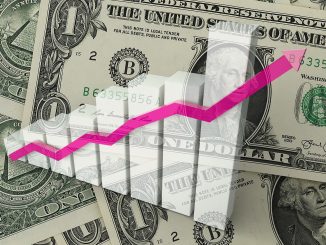For those of us tracking the odds of QE3 in September, two regional Fed presidents – both non-voting participants – offered opposite views today. Neither was terribly surprising. Chicago Federal Reserve President Charles Evans reiterated his support for additional easing. Via Reuters:
“The (July) employment data was a little better than expected,” said Evans, one of the Fed’s most dovish policymakers and who has led the most recent calls for active easing of monetary policy.
“It is still not nearly good enough,” he added. “We need 300,000 to 400,000 (new jobs) a month to get to where we should be.”…
…Evans reiterated that he thought current economic conditions already warranted action, adding that this was the third successive summer slowdown seen in the United States, and that as the Fed had acted to boost activity in the previous two downturns, there was every reason to be prepared to act this time.
Of course, Evans has been pushing this story for awhile, to no avail so far. I think that had he been a voting member, he would have dissented at the last three FOMC meetings. On the other side of the coin is St. Louis Federal Reserve President James Bullard. Again, via Reuters:
“I do think that the minutes are a bit stale because we have some data since then that has been somewhat stronger,” Bullard, who will be a voting member of the policy-setting committee next year, said in an interview.
This is similar to the concern I mentioned yesterday. To what extent have the FOMC minutes been overtaken by events, particularly better US data? Bullard further downplayed the tone of the minutes:
“The tone of the discussions, for me anyway, was ‘gosh things are not as good as we thought and it if continues to decelerate here, we’re going to have to do something’,” he said.
Still, he believed the probability of another round of easing was less than had been reflected in the pricing seen in financial markets over the summer.
“Going along at this slow pace is not enough to justify gigantic action,” he said. “I’d like to see…some deterioration or indication we’re going to slide down further,” in order to support additional easing.
Trouble is that we haven’t decelerated further, at least according to recent data. That said, sometimes we hear what we want to hear, and Bullard wants to hear things that don’t sound like QE3 is imminent. Indeed, he doesn’t have high expectations for the economy to begin with:
“If we were to resume, which I think we will, 2 percent growth, maybe a bit stronger than that, unemployment ticks down … that is not a great outcome, but to me that is a good enough outcome to keep us on hold,” Bullard said.
That’s a pretty low bar for growth, which is the same thing as a high bar for QE3.
Bottom Line: Two Fed presidents at opposite ends of the spectrum. I tend to think that the middle ground will be pulled by recent data in the direction of Bullard, which is why I see QE3 as less of a slam-dunk than the minutes seemed to imply. Evans pushed his usual agenda; I would expect nothing less from him. He wanted more action before this summer’s signs of slowing. No reason to expect the most recent data would change his view.




Leave a Reply